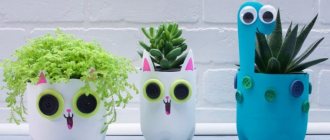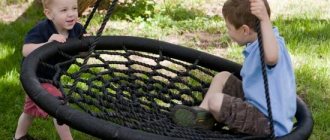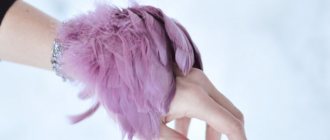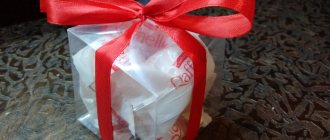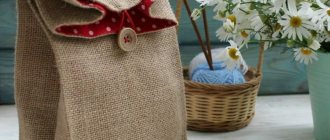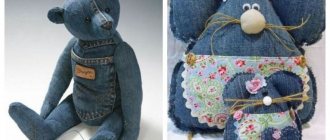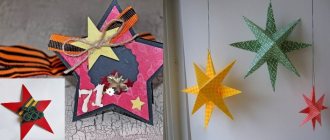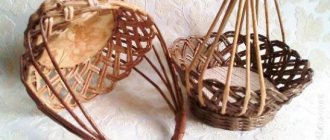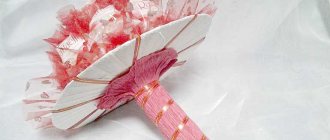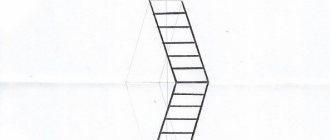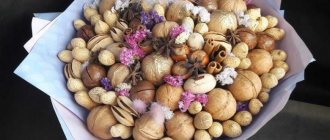by Alexey | For Kids Crafts For Friends Gifts For Loved Ones Decor For Men For Women Workshop Cheap Accessories | Tuesday, September 06, 2016
| Follow Make-Self.net on Facebook and be the first to read our articles. |
A wooden clothespin is an irreplaceable thing in the household. But its use is not limited to the ability to hold clothes on a line to dry. Today we will tell you how to make a large number of simple devices from clothespins. Did you know that using a clothespin you can make a chandelier or a simple airplane? Can you make a compact headphone holder from such a clothespin? Take a look at 38 interesting ideas, maybe they will inspire you...
Photo collages made from wooden clothespins
Master class for children “Matchshooter”
Shooting a match from a clothespin will take you back to your childhood for a moment; in addition, this toy will be a great distraction for children in the age of gadgets and the Internet.
- Disassemble the clamp into its component parts.
- Mark the area, as in the photo, which will then need to be removed.
- The length of the groove corresponds to the length of the match.
- Cut a groove to guide the movement of the match.
- The match should move freely along this groove.
- Secure the halves together with a strong thread.
- Insert the spring that will perform the shutter's mission.
The clothespin toy is ready.
Important! You should be careful with this device. Do not aim at animals or people. The flight range after the shot is 3-5 meters.
Video: How to shoot matches from a clothespin
Clothespin toys
Decorative napkin holder for the table
An old wooden clothespin can easily be turned into an original napkin holder. To work you need to prepare:
- wooden clamps;
- any wood glue.
Action plan:
- Disassemble the clamps into components.
- Glue 2 halves at the ends, as in the photo, and then together.
- You should have 2 sides of 15 glued pieces each.
- To make the base, glue 5 halves together, flat side down.
- You need to glue it like this: in the middle there is a block of 5 halves, and on the sides there are products of 15 pieces.
The finished napkin holder can be painted or varnished if desired.
Fruit basket
Garden clothespins are used as an interesting decoration. A stylish basket is made from:
- an old bucket (from mayonnaise or pickled cabbage);
- tucks.
Additionally needed:
- glue;
- knife;
- rope or twine;
- fabric or lace for decoration.
The craft is made according to this scheme:
- Wooden clamps are disassembled into “spare parts”.
- The bucket is covered in a circle.
- The top and middle are decorated with fabric or lace.
- Add ribbon or twine if desired.
Types of tiebacks, clips and hairpins
Clamps are distinguished by their functions, material, and shape. Different curtains have their own curtain fasteners. You can often see tiebacks made from laces with tassels or other decorations at the end. Instead of a cord, chains of beads and ribbon are used. Smooth long curtains are decorated with neat ribbons without patterns, matching the shade with the fabric. Curtains with patterns require tiebacks similar to the curtain material.
Hairpins made of fabric, which on one side are the same color as the curtains, and on the other a shade that matches them or is harmonious but contrasting, look impressive. Tight tiebacks beautifully complement the lace fastenings, with loops and other decorative light details.
Clips in the form of large hairpins are additionally decorated with beads, seed beads, wicker elements, and flowers. Sometimes they choose tiebacks in the form of rings, which are attached to different sides of the window. These fasteners position the curtains beautifully, framing the window. There is also an option in the form of tape, which is used to cover the fabric and secure it to hooks in the wall.
Advice! Dense material or oilcloth is sewn to the inside of the scaffold so that it holds its shape well.
Curtains decorate the room, but you can also fold them beautifully and smooth out the folds on them. The clamps will do this. Such devices are made from fabrics, ribbons, and plastic.
Benefits of using curtain clips:
- By securing the curtains with tiebacks, they allow sunlight into the room and create beautiful, even folds.
- Clips automate the process of closing and opening curtains, eliminating multiple steps.
- The fabric is secured with tiebacks so that the room is well lit, or vice versa, so that the room remains twilight.
- To create new interior details and points to attract attention to the decor. Tiebacks are made from various materials and in any shape, so they find their own accessories for a specific style.
Unusual clips and pins for curtains
Stores sell pins and curtain ties in large quantities, but they are not anything special. To attach an original tieback to the curtains, make it yourself.
- Tie grab. This unusual product is suitable for an office, study room or a schoolchild's room. To create this holder, you need a tie and double-sided adhesive tape. The tie is tied with a Windsor knot and a ribbon is glued to the back. Another piece of tape is attached to the wall, and then the curtain is pulled into the tie and glued to both sides of the tape. It is acceptable to use an old belt instead of a tie. It is sewn in the right places, the excess parts are cut off and a curtain is threaded into it.
- Clip made from utensils. This tieback looks stylish in a rustic kitchen, dining room or patio. The cup is better for clamping because it is easy to work with. Bring a tile drill for the job. The bottom of the cup is removed with a drill. To do this, draw a circle with a marker and seal it with tape. Before starting, check the cup to make sure there are no cracks. After pulling the bottom into the cup, pull the curtain through and hang it by the handle on a hook attached to the wall.
- Toy grip. This idea is implemented in children's rooms. For the first option, take two identical toys and sew them together with paws. A curtain is inserted into the opening between them and attached to the wall at the back. For the second option, choose a toy with long legs. The legs are sewn together and the curtain is threaded using the same principle.
- Necklace clip. A necklace holder is an elegant decor for a living room or bedroom. To do this you will need wire of different thicknesses, beads, seed beads or other decorations. Thick wire is wound into a ring. You can wrap it with a beautiful ribbon, or you can leave it just like that. Beads and seed beads are strung on a thin wire and then attached to a thick frame. They do this for several rows, and then thread the curtain into the ring and attach it to the hook at the back.
- Rope-rope. For heavy massive curtains, a large tie made of thick rope or rope is suitable. You can use it to wrap a curtain or make a ring by sewing the ends together. The main thing is to secure the bracket to the wall so that it does not slide down.
- Door handle. To do this, use a handle of an interesting design that matches the curtains. It is screwed to the wall so that the fabric can be tucked behind it. This is suitable for vintage or palace style interiors.
- Flower pick-up. In the store they buy any clamp to which flowers are sewn. They are bought in stores for decoration or handicrafts. But they also make them themselves. These clips add sophistication, sophistication and grace to the room.
Forum about polymers PlastExpert
The largest independent platform for discussing the production and processing of plastics and elastomers in various ways. Recommendations from leading experts.
- Unanswered topics
- Active topics
- Search
- PlastExpertForum about polymers Miscellaneous/OtherQuestions to experts from beginners/Questions from beginners
- Search
- Unanswered topics
- Active topics
How to collect clothespins?
How to collect clothespins?
#1 Post by AlexLi » March 16, 2014, 2:43 pm
Re: How to collect clothespins?
#2 Post by XACAH » Mar 16, 2014, 8:13 pm
Re: How to collect clothespins?
#3 Post by AlexLi » Mar 16, 2014, 9:58 pm
Re: How to collect clothespins?
#4 Post by Sergey3673 » March 27, 2014, 08:04
Re: How to collect clothespins?
#5 Post by DmitryZ » May 22, 2014, 6:23 pm
- General issues
- ↳ Discussion of plastics news and more
- ↳ Exhibitions, symposiums, conferences and seminars
- ↳Administrative/Admin forum
- Raw materials and main methods of production of plastic products/Plastics and main ways of production of plastic products
- ↳ Plastics and polymers
- ↳ Composites/Composites materials
- ↳ Pigments and Additives (additives to polymers)
- ↳ Glues, polymer coatings (paints&varnishes) and printing
- ↳ Thermoplastic elastomers and rubber goods, as well as rubber, TPE, TPE, rubber and other elastomers/Rubber, TPE, TPV, TPU and other elastomers
- ↳ Injection molding
- ↳ Extrusion
- ↳ Three-dimensional printing, 3D printers, 3D scanning/3D printing, 3D scanning, etc
- ↳ Blow molding
- ↳ Blowing PET preforms
- ↳ Blowing out canisters
- ↳Blowing bottles
- ↳ Blow molding Other issues
- ↳ Thermoforming, calendering, welding and other technologies
- ↳ Auxiliary equipment for plastics production
- ↳ Equipment for cooling and thermostating
- ↳ Equipment for crushing and grinding
- ↳Drying equipment
- ↳ Equipment for storage, dosing and supply of raw materials
- ↳ Robots and automation
- ↳ Measuring and controlling devices
- ↳ Cutting, winding, marking and printing devices
- ↳ Granulators, agglomerators and mixers
- ↳ Other auxiliary equipment
- ↳ Other questions
- Questions about production organizing
- ↳ Discussion of producers and resellers of equipment
- ↳ Manufacturers and suppliers of polymer raw materials
- ↳ Note to the hostess/This could be useful
- ↳ To processors about processors/To producers about producers
- ↳Organizing and managing of production
- ↳Designing of the plastic products
- ↳ Technical equipment/Molds and dies
- ↳ Equipment for injection molding
- ↳ Hot runner systems and controllers
- ↳ Equipment for extrusion
- ↳ Technical equipment for blow molding and pneumatic vacuum molding
- ↳About quality controls
- ↳ Recycling - recycling of plastics, ecology and environmental protection / Recycling - the second life of plastic. Ecology and environmental protection
- Work and education
- ↳ Employment questions
- ↳ Labor protection
- ↳Additional education, trainings
- Commercial sections (interested organizations are invited)/Commercial forums (contact)
- ↳ INEOS Styrolution/ INEOS Styrolution
- ↳ Timiti Molds and Plastics Co. LTD
- ↳ Plastmash (FPM)
- ↳Tara
- ↳YUDO
- ↳ Japan Steel Works (JSW)
- ↳ PORTMOLD/PORTMOLD
- About service, reparing and maitenance of equipment
- ↳ Spare parts for your equipment
- ↳ Injection molding machines need in repair
- ↳ Our dear extruders
- ↳ Other equipment for plastics processing/Service of other equipment for plastics
- ↳ Peripherals are also equipment/Service of auxiliaries
- Other
- ↳ Questions for experts from beginners
- ↳Buy and sell
- ↳ Looking for a manufacturer/Manufacturer wanted
- ↳ Offtopic/Offtopic
- ↳Kunstkamera
- Archive
- ↳ POLYPLASTIC Group
- ↳ New Orbit
- ↳ ILMA Technology
- ↳ Rusplast
- ↳Jonwai
Where to attach hairpins and tiebacks
The main rule when attaching clamps and clamps is to arrange them symmetrically. To avoid mistakes, apply tape to the intended location and see if the look suits you. Take into account the length of the curtains, drapes, window height and distance from the floor to the window sill. Even furniture and fabric patterns, wallpaper colors and other decorative elements influence the position of the clamps. The hairpins are attached at a distance of 2/3 from the ceiling. On a curtain that reaches the floor, tiebacks are placed approximately a meter from the bottom. This length is changed depending on the pattern on the curtains or other parts of the decor that they want to leave more visible.
What can you do with your own hands?
There are many ideas for a house on the Internet. Using simple materials at hand, you can make for your child:
- a hut on chicken legs;
- a house made of branches;
- Old Man-Lesovich's house;
- original pumpkin house;
- a hut in a clearing;
- forester's hut, etc.
Various types of craft houses
There are a lot of options and ideas, your imagination is limitless! Armed with patience and skill, you will definitely make a beautiful craft.
New Year's house with snow on the roof
Let's get acquainted with the most popular options and try to bring them to life together.
Cute DIY hut
Note! If you understand what to use for making and how to approach this process, you can create a true work of art! Of course, the first time you get a product that is far from perfect, but this is only a matter of time.
Baba Yaga with her hut on chicken legs
What materials should I use?
Each gardener has his own vision of his own plot. And each person collects his own set of excess materials in his garage or shed. And from these materials you need to choose the most suitable ones for making your own designs. It is necessary to pay attention to the following factors:
1. If there is a well or a shaft on the site made of concrete rings, the decorative cladding can be made of brick or stone. In this case, the erected structure can be used for its intended purpose.
2. If you plan to build a well only as decoration, use available materials.
If you have enough wooden blocks or plywood, make a wooden well. It is appropriate to build a “lining” from car tires, of which motorists have a sufficient number.
3. Often plastic or metal is used as a building material for cladding. Plastic is polyethylene bottles that people are used to filling with sand and fastening together with polyethylene and tape.
The structure is then simply painted according to the designer’s – gardener’s – idea. The metal is a barrel that is no longer suitable for its intended use, which is also painted, covered with earth and flowers are planted in it (an excellent well-flower bed is obtained).
When choosing a material, you should only consider the durability of the constructed structure.
Phone stand
A phone stand made from clothespins looks stylish and is functional. It allows you to easily hold your smartphone to take pictures. Take:
- 7 plastic hooks;
- pen or pencil.
The action plan is as follows:
- Attach clothespins to a pencil or pen, one to the other at short distances.
- Place the handle on the table, turn 1 and 5 back, 2 and 6 forward, and the rest should “look” up. It is into their grooves that the phone or tablet is then inserted.
You saw how many new and interesting things come out of an ordinary linen tuck. What creative ideas can you share with readers? Write in the comments.
Hooks for the kitchen or garden
How to make a clothespin beautiful and bright with your own hands so that it fits organically into the interior of the kitchen and remains just as functional? The answer follows. Take:
- clamps;
- double-sided and decorative tape;
- scissors.
Manufacturing algorithm:
- Decorate the wooden base with decorative tape.
- Use double-sided tape to attach the required number of tucks to a cabinet in the garden or kitchen.
Interesting! Plastic models can be easily used to store cosmetics in the bathroom.
Photo holder
You can create original things from ordinary clothespins without much effort. Need to:
- wooden elements-clamps;
- hoop;
- acrylic paint;
- hot glue.
A do-it-yourself stand made of clothespins for your favorite photos is made like this:
- To completely cover the wood with paint, the product should be disassembled.
- Once the paint is dry, reassemble the parts.
- Glue the elements to the hoop with glue.
- You can now attach photos to them.
You can put a vase or indoor flower in the middle.
Main stages of work
Also, to make this homemade product you will need four pieces of steel strip 20 mm wide and 3 mm thick. Length of blanks: two 50 mm, 40 and 25 mm. After this, it is necessary to weld pieces of metal strip 50 and 40 mm long to one corner, and 50 and 25 mm to the second.
Then the master marks and drills holes, after which he connects the two halves of the clothespin using a bolt and nut.
Car air freshener
The do-it-yourself flavoring is made from the following materials:
- felt balls;
- tucks;
- PVA glue;
- favorite aromatic oils.
Let's start making:
- Glue felt balls to the side.
- Add some scented oil to each one.
Attach a homemade fragrance to the inside of your car.
Convenient family calendar
Clothespins in the interior can form a beautiful and effective calendar of family affairs. You will need:
- clamps;
- gouache or acrylic paint;
- brush;
- gel pen or marker;
- twine;
- sandpaper;
- scissors;
- decorative tape.
The manufacturing master class is as follows:
- Paint the sides of the clips with the desired color.
- Write the day of the week or month on each of them.
- Attach them to the rope.
Now you can write down the things you want to do this week on small pieces of paper and attach them to the desired clip.
